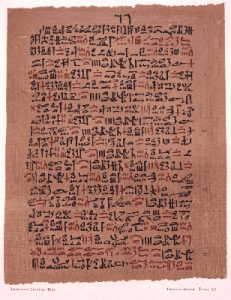
The term comes from the Greek term asthma Aazein:
The word asthma comes from the Greek verb aazein, which means
pant, exhaling with the mouth open, breathing hard. In the Iliad, a Greek epic poem (attributed to Homer), the term "asthma" appeared for the first time as far as literature is concerned.The "Hippocratic" by Hippocrates, is the oldest text where the word "asthma" but as a medical term. It is not entirely clear whether Hippocrates (460-360 BC) nominates to asthma as a clinical entity or simply as a symptom. 

Hippocrates states that the spasms associated with asthma were more likely to occur among the fishermen, tailors and metal workers.
Aretaeus of Cappadocia (100 AD), a former teacher Greek physician, wrote a clinical description of asthma. Galen (130-200 AD), an ancient Greek physician, wrote several mentions of asthma were generally in agreement with the texts of Hippocrates and to some extent with those of Aretaeus of Cappadocia. He describes the obstruction and bronchial asthma as proposed owl treat blood mixed with wine. 
Moses Maimonides (1135-1204 AD), the rabbi and philosopher who lived in Andalusia, Morocco and Egypt, was also a physician who practiced medicine in the court of the Sultan Saladin of Egypt. Among the many medical texts, Maimonides wrote the "Treatise of Asthma" for Prince Al-Afdal, (one of his patients). Maimonides showed that the symptoms of his patient often starts as a common cold during the wet months. Finally, the patient was out of breath and coughing until mucus expelled, which improved his condition. He noted that the dry months of Egypt helped asthma sufferers. Maimonides also suggested avoiding strong medication, sleep and excess fluids, moderation in sexual activity, and chicken soup.

Bernardino Ramazzini (1633-1714 AD), known by some as the father of sports medicine, detects a link between asthma and organic dust. It also recognizes the exercise-induced asthma.
In the early 20's asthma was considered a psychosomatic illness (probably delayed approach any medical breakthrough at the time). During the years 1930 to 1950, asthma is known as one of "the seven holy psychosomatic illnesses."

